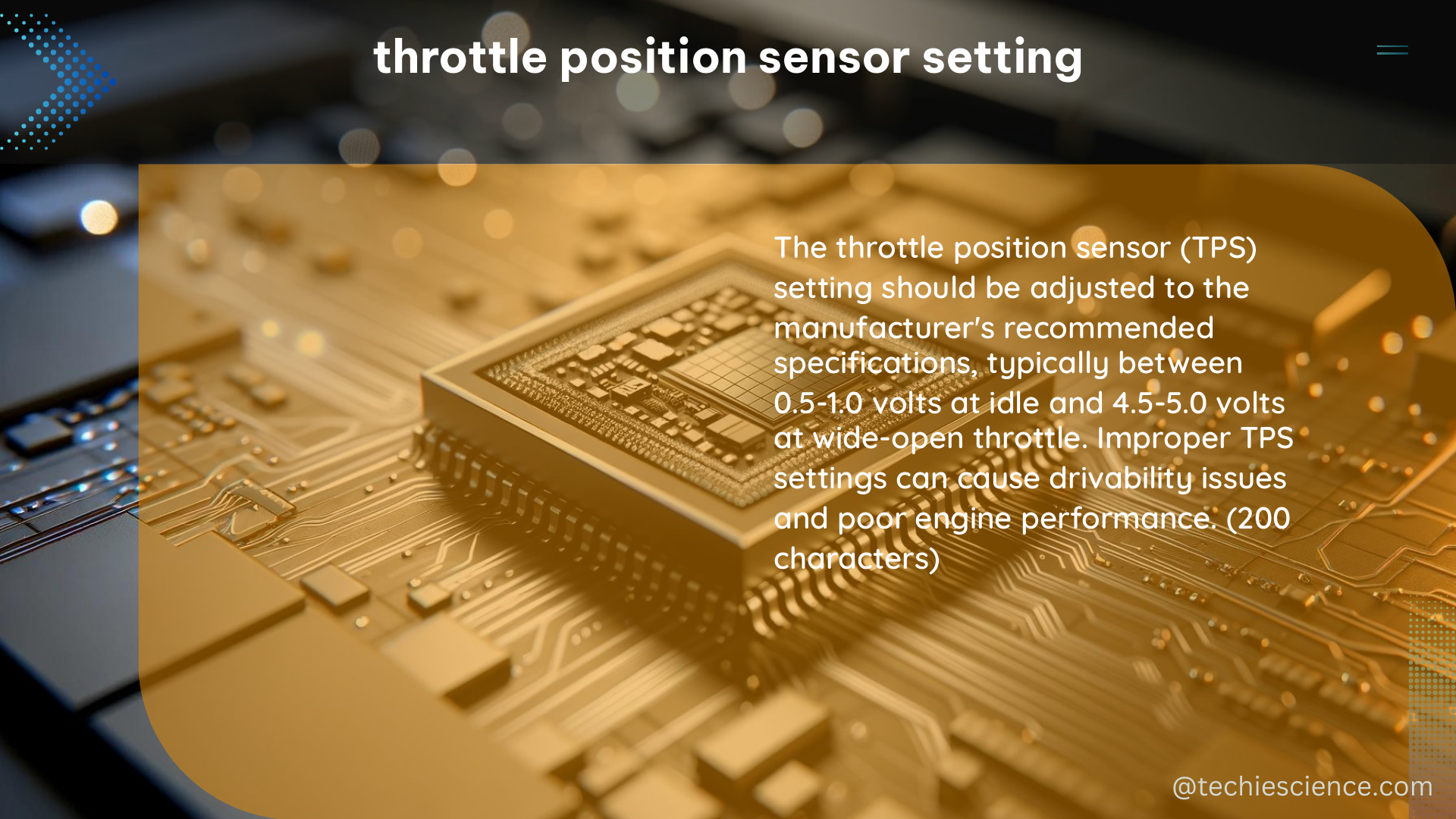The Throttle Position Sensor (TPS) is a critical component in modern vehicles, providing essential data to the Engine Control Unit (ECU) about the throttle position. This information helps the ECU manage ignition timing and fuel injector duration, significantly impacting the car’s performance. Accurately calibrating the TPS is crucial for reliable dyno testing and daily driving. This comprehensive guide delves into the adjustment procedures, technical specifications, and a detailed DIY approach to TPS setting.
Adjustment Procedure and Testing Procedure
The TPS adjustment process involves precise steps and requires specific tools and measurements. The following procedure, derived from various sources, provides a detailed guide to TPS adjustment:
Tools Needed
- A multimeter or ohm meter
- A Philips screwdriver
- A feeler gauge set, including .65mm (.026 inch), .54mm (.021 inch), and .70mm (.028 inch) feeler gauges
Adjustment Procedure
- Loosen the two screws holding the sensor just enough to turn it.
- Insert a .65mm feeler gauge between the throttle stop screw and the stop lever.
- Connect one tester probe to terminal IDL and the other to terminal EL2.
- Slowly turn the sensor clockwise until the ohm meter deflects to 0 ohms (no continuity), then retighten both screws.
- Recheck continuity between the terminals using .54mm and .70mm feeler gauges.
Tightening Screws
When tightening the screws, turn one 1/8 of a turn and then the other 1/8 of a turn, repeating until the screws are tight. This ensures the TPS does not move and change the setting.
Electrical Specifications and Calibration

Calibrating the TPS involves setting the resistance between specific terminals at various throttle positions. The following procedure, derived from multiple sources, provides a detailed guide to TPS calibration:
Tools Needed
- An ohm meter or multimeter
- .016 inch and .019 inch feeler gauges
Calibration Procedure
- Identify the terminals: Terminal 1 (left), Terminal 4 (right), with Terminals 2 and 3 in between.
- Measure resistance between Terminal 1 and 3 with the throttle body closed: Resistance should be between .34k and 6.30k ohms.
- Measure resistance between Terminal 1 and 2 with a .016 inch feeler gauge: Resistance should read under .5k ohms.
- Measure resistance between Terminal 1 and 2 with a .019 inch feeler gauge: Resistance should read under infinite (open circuit).
- Measure resistance between Terminal 1 and 3 with the throttle body opened completely: Resistance should read 2.4 – 11.2k ohms.
- Measure resistance between Terminal 1 and 4 with the throttle body opened completely: Resistance should read 3.1 – 7.2k ohms.
DIY Approach
Adjusting the TPS requires patience and precision. The following steps, derived from various sources, provide a DIY approach to TPS adjustment:
- Loosen the two TPS mounting screws.
- Adjust the TPS by turning the TPS body clockwise or counterclockwise until the multi-meter reading is less than 2 Ohms.
- Insert a thickness gauge (such as a .65mm feeler gauge) between the throttle stop screw and lever.
- Slowly turn the TPS clockwise until the meter just switches from a less than 2 Ohm reading to infinity (open circuit).
- Tighten the TPS mounting screws and re-verify the setpoint.
- Reconnect the vehicle plug that normally connects to the TPS.
Remember, the TPS adjustment process requires careful attention to detail and precise measurements. Ensure you have the right tools and follow the steps closely to achieve the optimal TPS setting for your vehicle.
References:
– TPS Adjustment Procedure and Testing Procedure
– How to Calibrate a Throttle Position Sensor with a Multi-Tester
– DIY: How to Calibrating Voltage Your TPS Sensor
– Throttle Position Sensor (TPS) Adjustment

The lambdageeks.com Core SME Team is a group of experienced subject matter experts from diverse scientific and technical fields including Physics, Chemistry, Technology,Electronics & Electrical Engineering, Automotive, Mechanical Engineering. Our team collaborates to create high-quality, well-researched articles on a wide range of science and technology topics for the lambdageeks.com website.
All Our Senior SME are having more than 7 Years of experience in the respective fields . They are either Working Industry Professionals or assocaited With different Universities. Refer Our Authors Page to get to know About our Core SMEs.